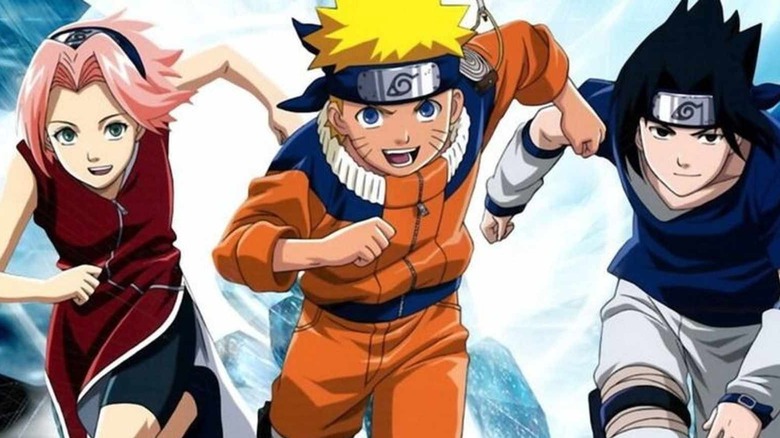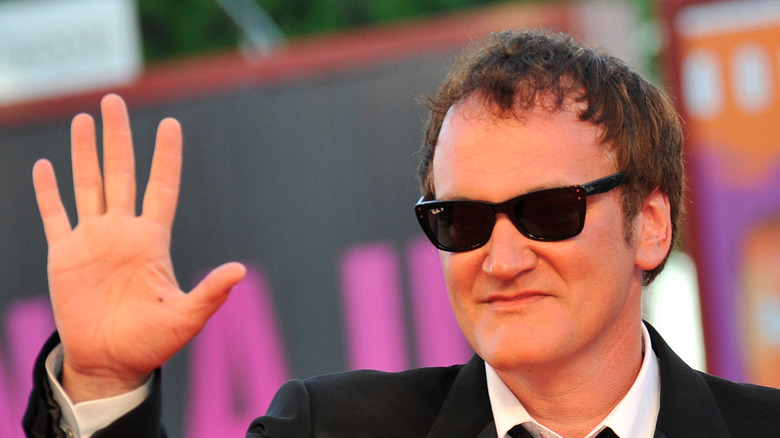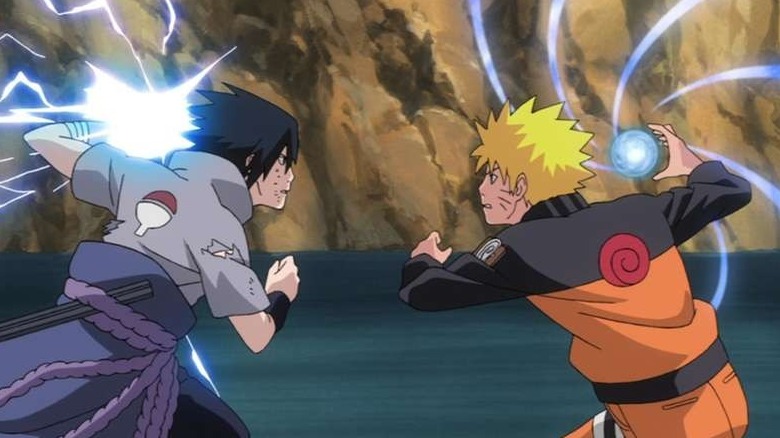How Quentin Tarantino Influenced Naruto
"Naruto" is one of the most popular anime series in the world. Based on the manga created by Masashi Kishimoto, the series focuses on Naruto Uzumaki and his fellow ninja as they defend the Hidden Leaf Village from all manner of threats. "Naruto" has given birth to a whole franchise, including the sequel series "Boruto: Naruto Next Generations," and is considered to be one of the "Big Three" shonen anime alongside "One Piece" and "Bleach." I've only seen a little bit of "Naruto," but it's not hard to see why the series took off — its action sequences are full of inventive choreography, including the use of special techniques in battles. Plus, it has ninjas, and everything's more awesome with ninjas.
Kishimoto has been rather open about what media shaped "Naruto." In addition to the classic shonen anime "Dragon Ball Z," Kishimoto also poured his own life experiences into Naruto's journey, helping make the young ninja's transition from Hidden Leaf Village to Hokage feel all the more human. In a 2008 interview with the Los Angeles Times, Kishimoto also revealed that a renowned filmmaker served as a major influence while he was crafting fight scenes.
Kill Sasuke: Vol 1
An avowed cinephile, Kishimoto cited Quentin Tarantino's films as a major influence on "Naruto":
"I watch a lot of movies, and I tend to be influenced by scenes that intrigue me, that make me want to use the same effects or technique...I like the way Quentin Tarantino creates a scene using a series of close-ups or showing very cool images of a person or people walking on some ordinary street in slow motion. I wish I could achieve that kind of slow-motion effect in manga, but it's rather difficult to draw; the only things we can play with are tones of black and white."
Tarantino's slow-motion action sequences are especially prominent in both "Kill Bill" films and the infamous (and extremely cool) slow-motion walk from "Reservoir Dogs." However, one scene that feels like a possible influence on "Naruto" is the origin story for Lucy Liu's O-Ren Ishii. Not only is it a beautifully animated sequence, but Tarantino's trademark hyper-violence is on full display, especially when an unlucky thug receives a bullet to the brain. It's a technique that would be utilized in multiple fights across the "Naruto" manga and its anime adaptation, especially when Naruto battles his friend/rival Sasuke. Not only is this scene loaded with emotional weight as both men battle for the fate of the world, but it also manages to showcase elements of Tarantino's style as the two run in slow-motion at each other before unleashing a flurry of blows.
Cinema no Jutsu
Tarantino wasn't the only influence on Kishimoto's work; the author also said that Michael Bay's technique of shooting a scene against background light was something he'd wanted to try in manga but felt it would be difficult to pull off. Given that Bay is well-renowned for his frenetic and almost incomprehensible fight scenes, particularly in the "Transformers" film franchise, I'm glad that Kishimoto chose a simpler technique to replicate.
It looks like things may even come full circle as Lionsgate is currently producing a live-action film adaptation of "Naruto" with Michael Gracey ("The Greatest Showman") tapped as director. I don't know if Gracey will look to Tarantino's filmography while making the film, but the elaborately staged numbers in "The Greatest Showman" lead me to believe he'll definitely handle the fight scenes well. And hopefully it escapes the fate that befell Netflix's live action adaptation of "Cowboy Bebop".


